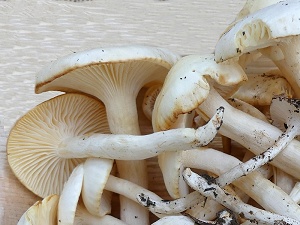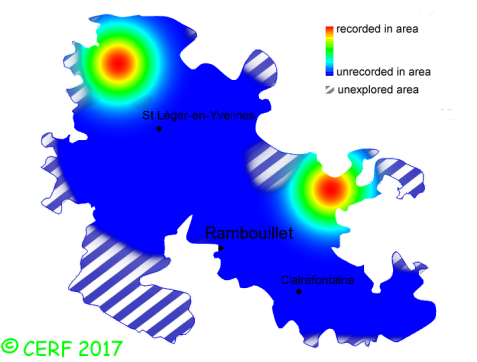| Hygrophorus discoxanthus (Fr.) Rea |
|
|
|
|
|
|
The cap is white then ochre-yellow, then eventually with a reddish centre, conical then convex to expanded, sometimes depressed, sometimes a bit umbonate; its margin is thin, overhanging, smooth. The cap surface is smooth, viscid or sticky when damp, become matt and downy when dry. The stem is white then yellowing-reddening with age, cylindrical and rooting, slightly viscid then drying, with vertical fibrils, without ring. The flesh is whitish, more ochre in the stem; its taste is mild; the odour is aromatic, depending on authors: of resin, goat moth caterpillar, of scotch adhesive tape, or tangerine; its texture is fibrous. The gills are cream-white then ochraceous brown with a reddish edge, broadly adante to decurrent, distant . The spore print is white. This species is mycorrhizal. It grows in broad-leaved woods, on a rather calcareous soil, preferably with beech. The fruiting period takes place from August to November.
Chemical tests : orange to ochraceous reaction to potash on cap, gills and stem base; yellow reaction of the flesh in stem base. Distinctive features : white viscid cap, turning yellow from the margin with age and turning yellow-brown when manipulated; white pointy stem, turning reddish with age; aromatic odour of goat moth's caterpillar or scotch tape; yellow to brown reaction of flesh to potash; with beech Hygrophorus discoxanthus is rare and localised in the forest of Rambouillet, and is occasional, more generally speaking . | ||
|
page updated on 14/01/18

